U.S. STATES POST OFFICE TERMINAL ANNEX BLDG.
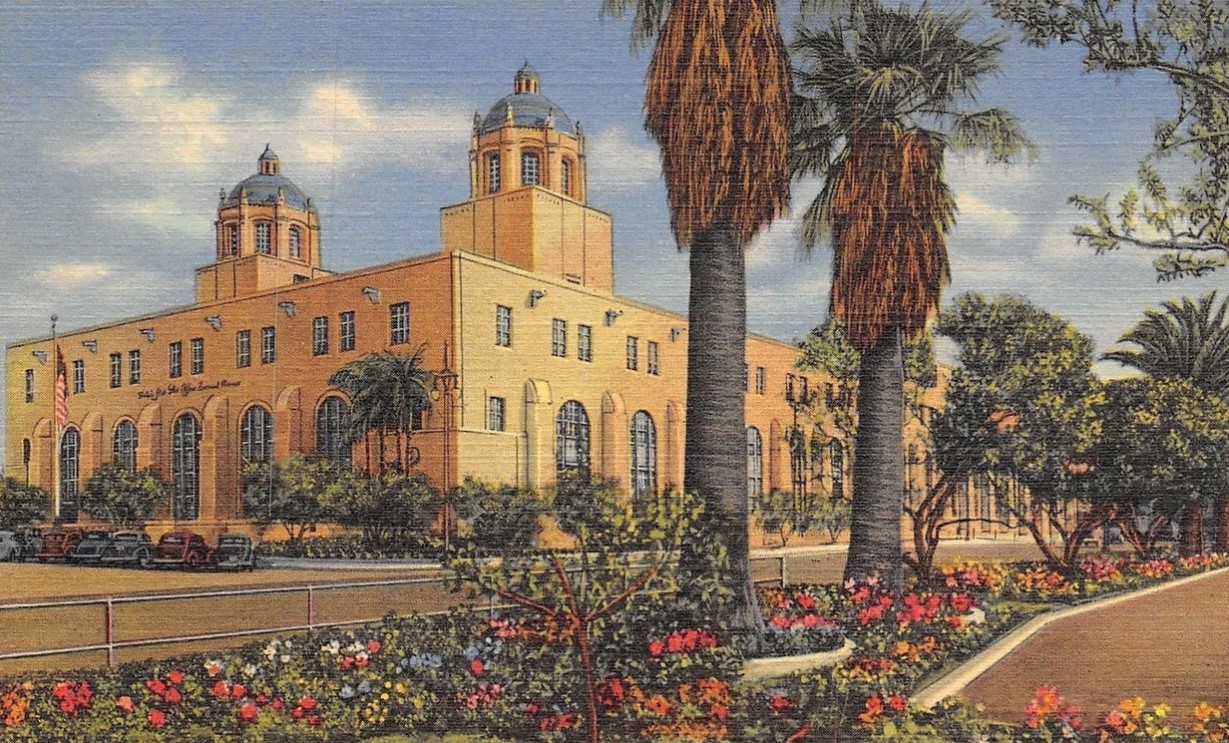 |
|
| (ca. 1940)* - Postcard view of the U.S. Terminal Annex Post Office located at 900 N. Alamada Street, Los Angeles. |
Historical Notes Working as Consulting Architect for the US Treasury Department just before World War II, Gilbert Stanley Underwood designed this large mail-sorting building for the US Post Office. The facility received loads of mail via trains arriving at the nearby Union Station and served as the primary organizational nexus for the US Post Office in Los Angeles from 1938 until 1989. Underwood designed the building as a synthesis of the WPA Moderne and Spanish Colonial Revival Styles. |
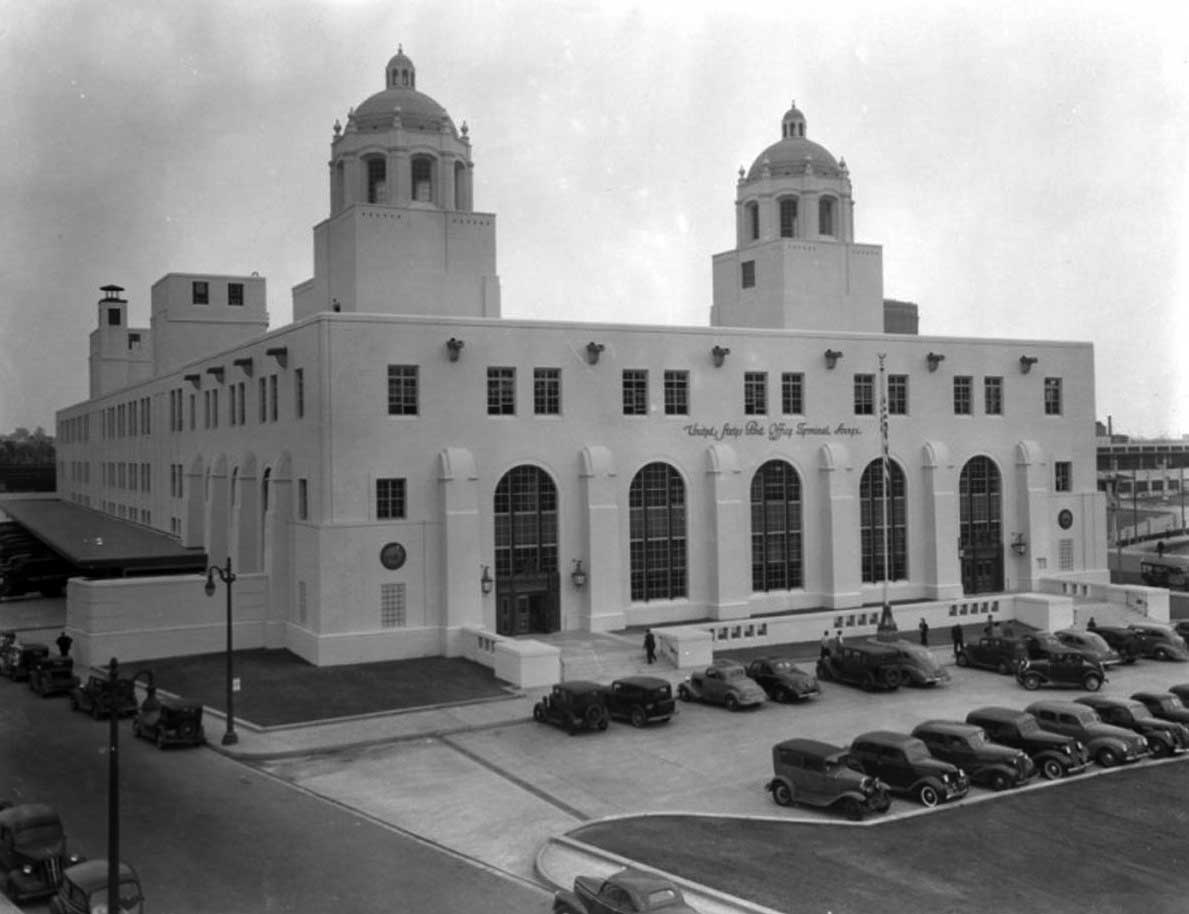 |
|
| (1940)* - Front entrance to the United States Post Office Terminal Annex Building. Located at 900 N. AlamedaSt., the Terminal Annex was built from 1939 to 1940. |
Historical Notes Gilbert Stanley Underwood designed the Post Office Terminal Annex, built between 1938 and 1940, in the California Mission style; the supervising engineer was Neal A. Melick. The cupolas of the Terminal Annex are replicas of those of the Basilica of Guadalupe in Mexico City. |
 |
|
| (1940s)^^ – View showing the Terminal Annex Building and parking lot. |
Historical Notes The U.S. Post Office - Los Angeles Terminal Annex was the central mail processing facility located on Alameda Street near Union Station in Los Angeles from 1940 to 1989. The Mission Revival and Spanish Colonial Revival building designed by Gilbert Stanley Underwood was added to the National Register of Historic Places in 1985.* |
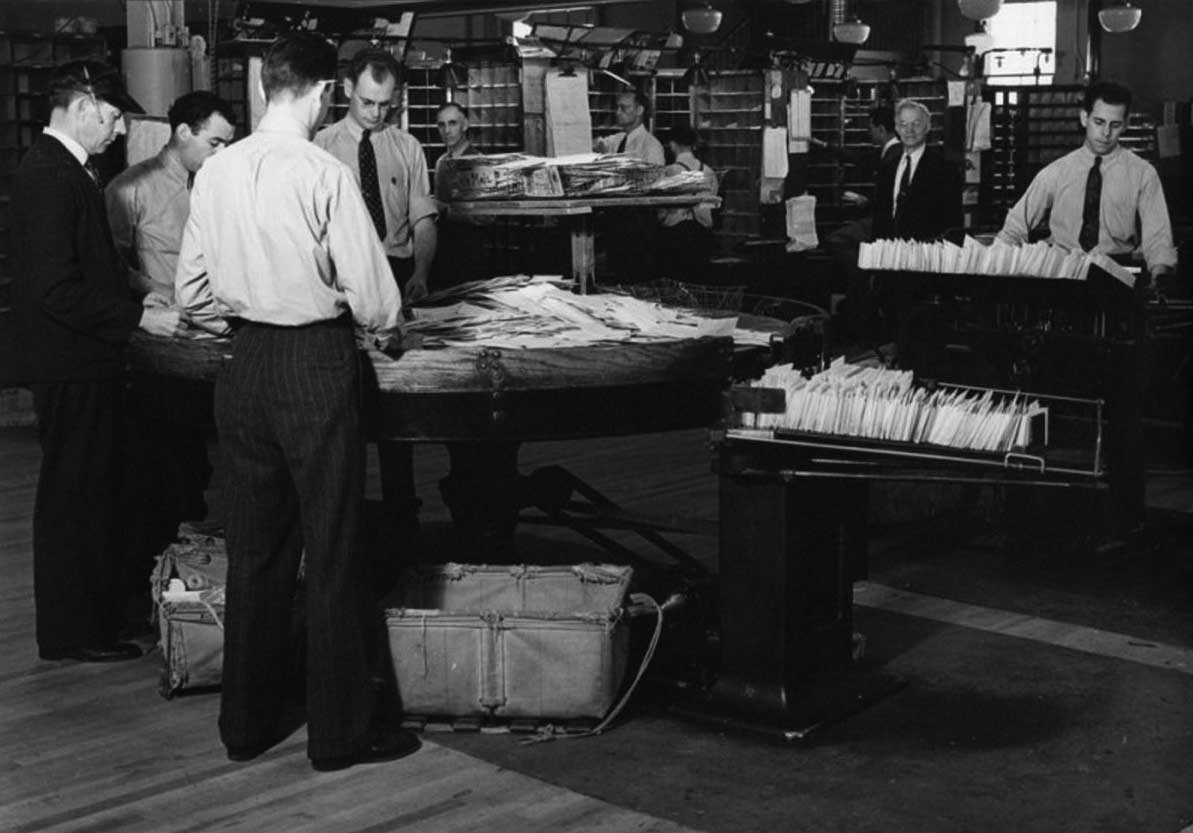 |
|
| (1940s)* – Mail handlers and processors sort mail inside the Post Office Terminal Annex. |
Historical Notes Employees of the United States Postal Service are divided into three major categories: Letter Carriers (also referred to as mailpersons or mail-carriers); Mail Handlers and Processors; and Clerks. In the olden days there were more mail handlers and processors that often worked in the evening and at night preparing mail and bulk goods for the carriers to deliver.* |
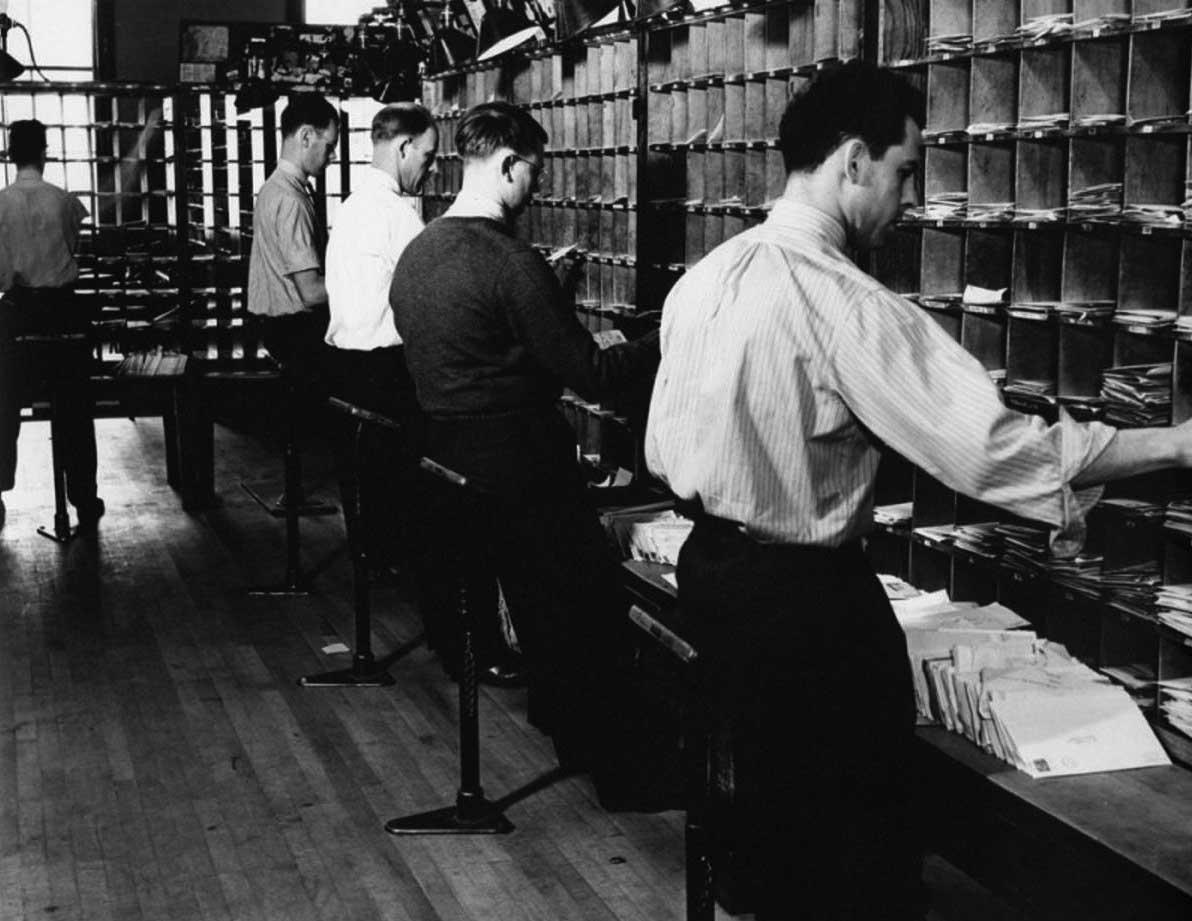 |
|
| (1940s)* - Mail sorters and/or processors, Post Office Terminal Annex. |
Historical Notes The 400,000 square feet building served as the main mail distribution center for the Metropolitan Los Angeles area from 1940 until 1994. Approximately 1,700 Post Office employees handled over four million pieces of incoming and outgoing mail on a daily basis.* |
.jpg) |
|
| (ca. 1945)* - United States Post Office Terminal Annex as seen from Union Station across Cesar Chavez (formerly Macy Street). |
Historical Notes The Post Office Terminal Annex, a three-story building with two towers, was designed by Gilbert Stanley Underwood and built by Sarver & Zoss between 1939 and 1940. The building was known to open 24 hours a day and responsible for processing 2,000,000 mails per day including all incoming and outgoing mails in Los Angeles. It is located between Alameda Street and Cesar E. Chavez Avenue, across from the Los Angeles Union Station.^ |
 |
|
| (1940s)* - United States Post Office Terminal Annex, located at 900 N. Alameda Street, as seen from Union Station across Macy Street (later Cesar Chavez Avenue). |
Historical Notes Only ten years after its opening, the demands of the city's mail had already outgrown the facility. Accordingly, the Post Office announced plans in 1950 for a $12 million expansion, including an adjoining five-story parcel post building and other structures as well.* |
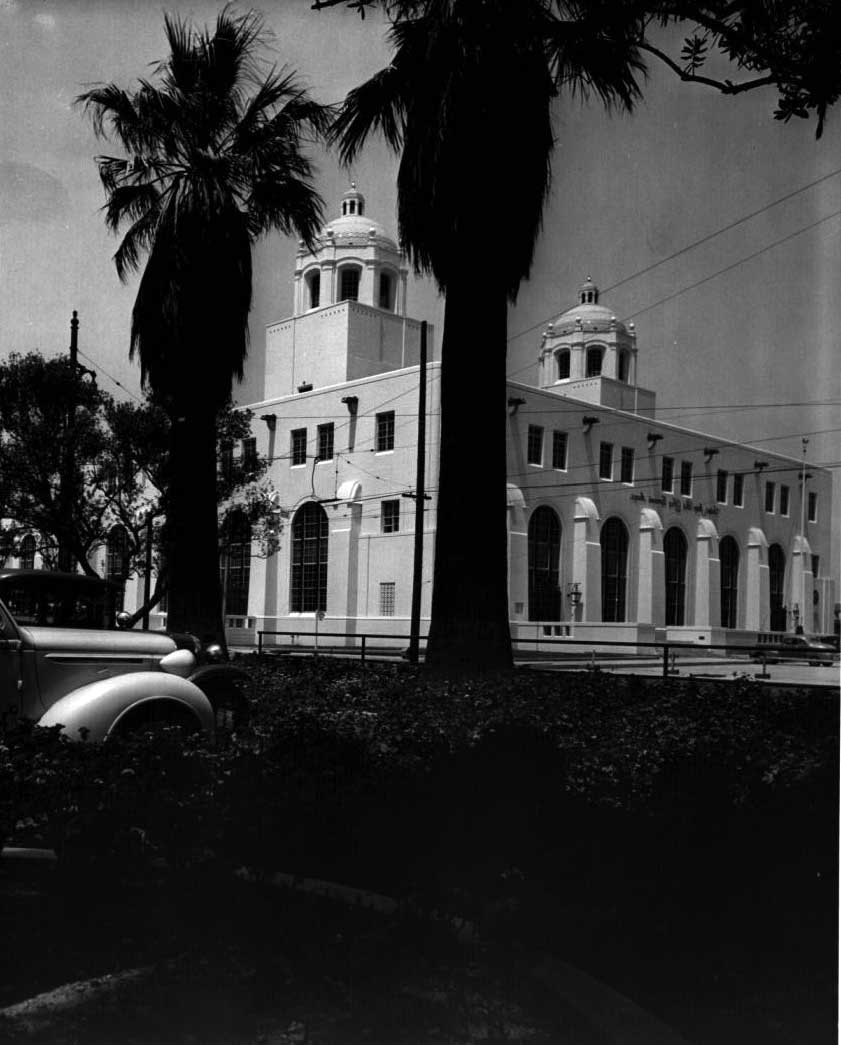 |
|
| (1940)^ - Terminal Annex Post Office Building across Macy Street from Union Station. Photo by Dick Whittington |
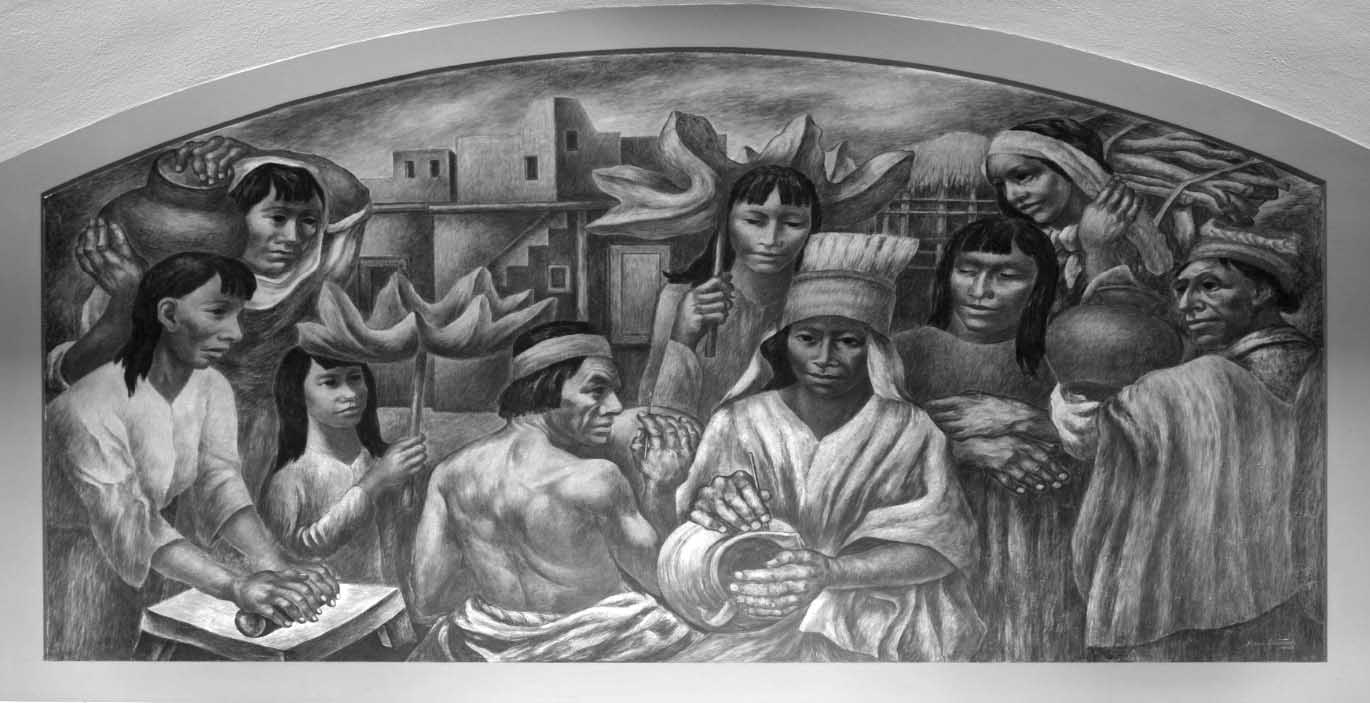 |
|
| (1944)* - Mural in the lobby of the Terminal Annex Building - Artist Boris Deatsch |
Historical Notes The fresco in the Post Office Terminal Annex lobby consists of eleven semi-circular, tempera on plaster “lunettes” by Boris Deutsch depicting “Cultural Contributions of North, South and Central America.” The murals were funded by the Treasury Section of Fine Arts and completed in 1944. “The mural series entitled “The Cultural Contributions of North, South and Central America” in the Los Angeles Terminal Annex Post Office was painted in the early 1940s by Boris Deutsch. While the murals depict a number of indigenous North and South Americans, Mr. Deutsch himself was originally from Lithuania… In 1939, he received a commission from the United States Treasury Department to paint murals in the Los Angeles Terminal Annex Post Office. The space included 11 panels, or “lunettes”, and Mr. Deutsch was required to choose his subject matter and sketch all 11 designs, as well as close-ups. He chose the subject of “Culture of the Americas”, and represented indigenous peoples from South America, Mexico and California, as well as scenes from science and industry. Mr. Deutsch also completed other post office murals through the same program, including the “Indian Bear Dance” mural in the post office in Truth or Consequences, New Mexico. Portraits are described as a quintessential subject of Mr. Deutsch’s work. He employed modernist concepts such as loose, expressionist strokes and flattened, almost cubist, qualities… Despite the continued presence in the Los Angeles area of the Gabrieliño-Tongva people, the mural lunettes may not include them at all. In the lunette depicting Indians in “Alta California”, which is now the state of California, the artist chose to paint Father Junipero Serra, who spent very little time in the Los Angeles area, and was more influential in the San Diego and Monterey Bay areas after arriving from Baja California. San Diego was the home of the Kumeyaay people, and Monterey was the territory of the Rumsen Ohlone.* |
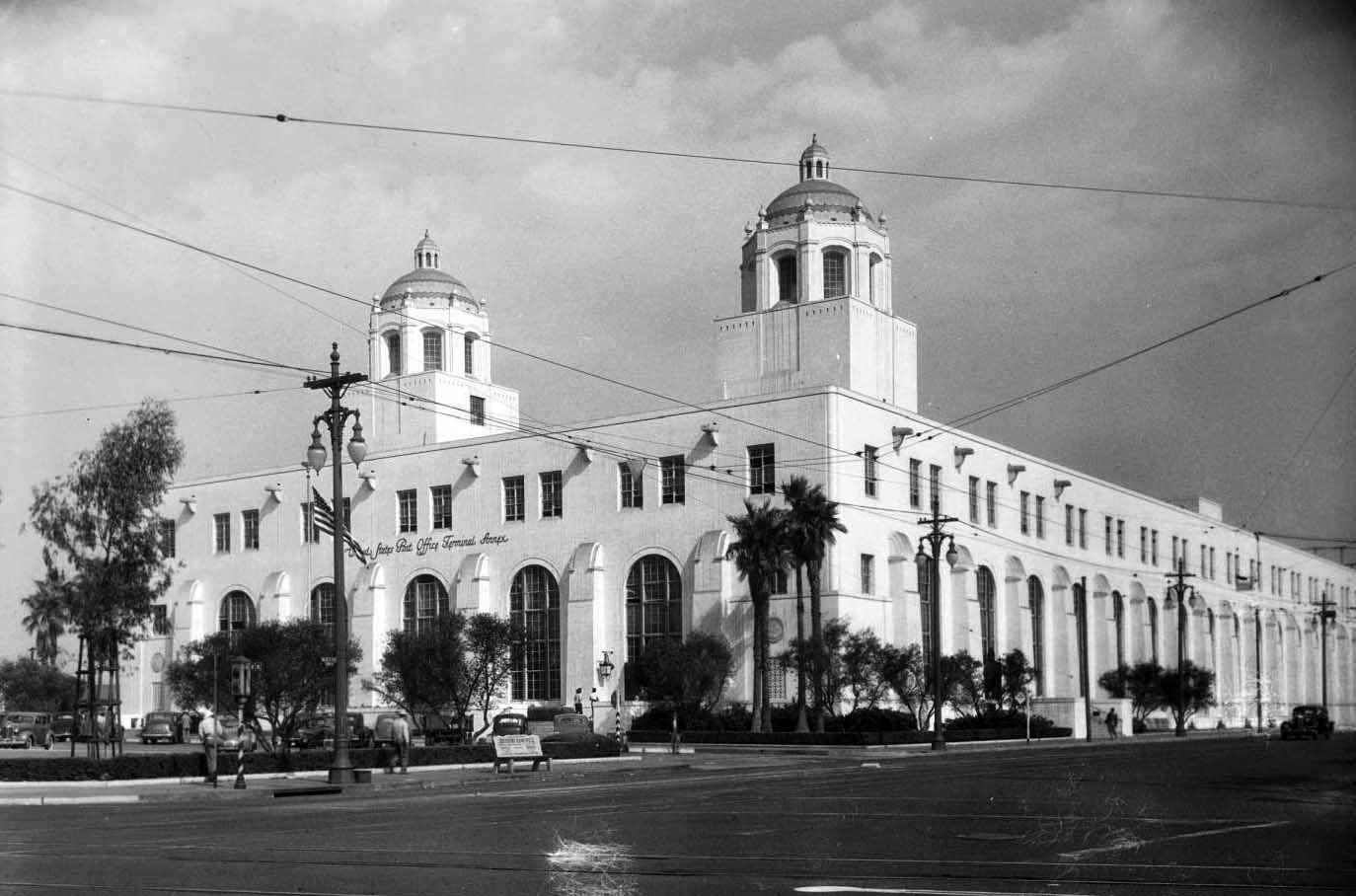 |
|
| (1943)^ - Terminal Annex Post Office – 900 N. Alameda Street - Designed by Gilbert Stanley Underwood |
Historical Notes The cupolas of the Terminal Annex are replicas of those of the Basilica of Guadalupe in Mexico City. |
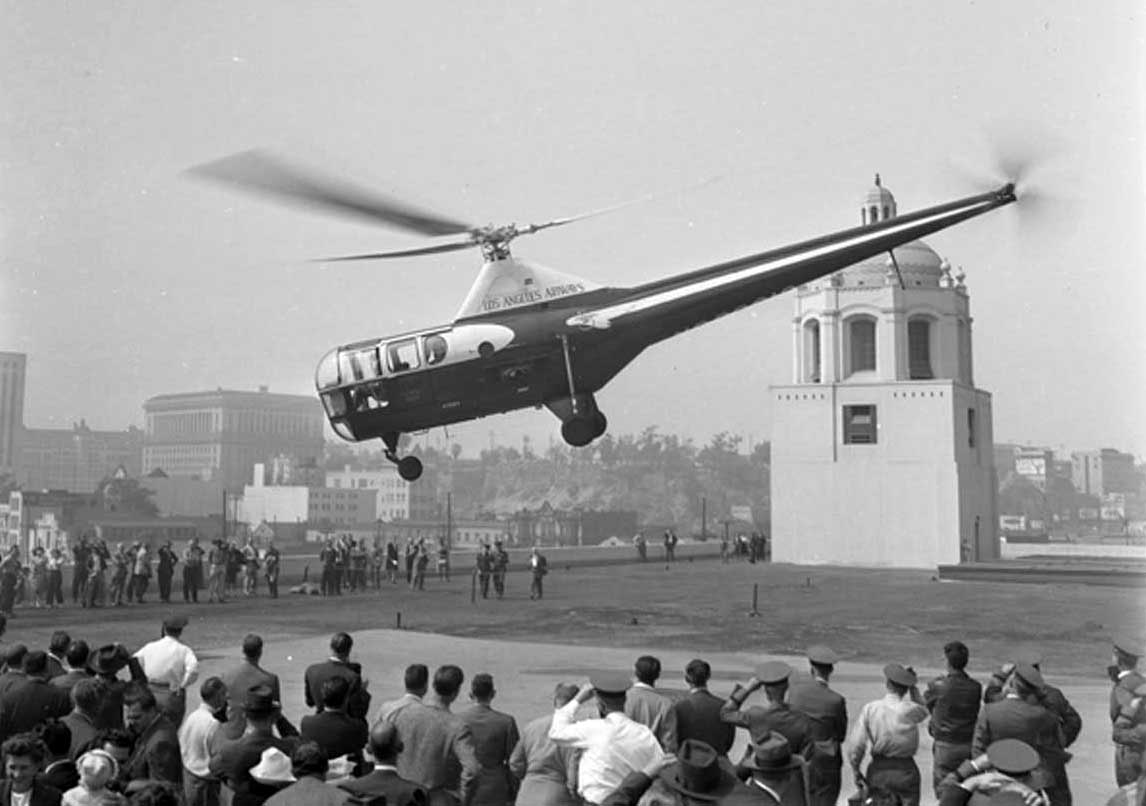 |
|
| (1947)* - A Los Angeles Airways Sikorsky S-51 helicopter lands on the roof of the Terminal Annex Post Office. |
Historical Notes The Los Angeles Times published the above photograh on October 2, 1947 with the following caption: “NEW MAIL SERVICE — Los Angeles Airways helicopter shown landing on the roof of Terminal Annex Post office yesterday to inaugurate helicopter air-mail service, the first of its kind in the United States. Two flights daily are planned on this run with another to start Oct. 16.” Los Angeles Airways began regularly scheduled air mail service in Los Angeles, using the Sikorsky S-51 helicopter. Before long, LAA was operating a twice-a-day mail service between the main downtown post office and Los Angeles International Airport along with a small package air express service. With a fleet of five S-51s, LAA’s first year of operations resulted in 700 tons of mail being carried with approximately 40,000 landings throughout the Los Angeles metropolitan area. The small operation maintained a 95% reliability rate and by the time it began its small package air express service in 1953, it was annually moving nearly 4,000 tons of mail a year. In July 1951 the CAB awarded LAA’s reliable helicopter operation the rights for passenger services which started in November 1954 with larger Sikorsky S-55 helicopters while the smaller S-51s continued the mail and small package services.* |
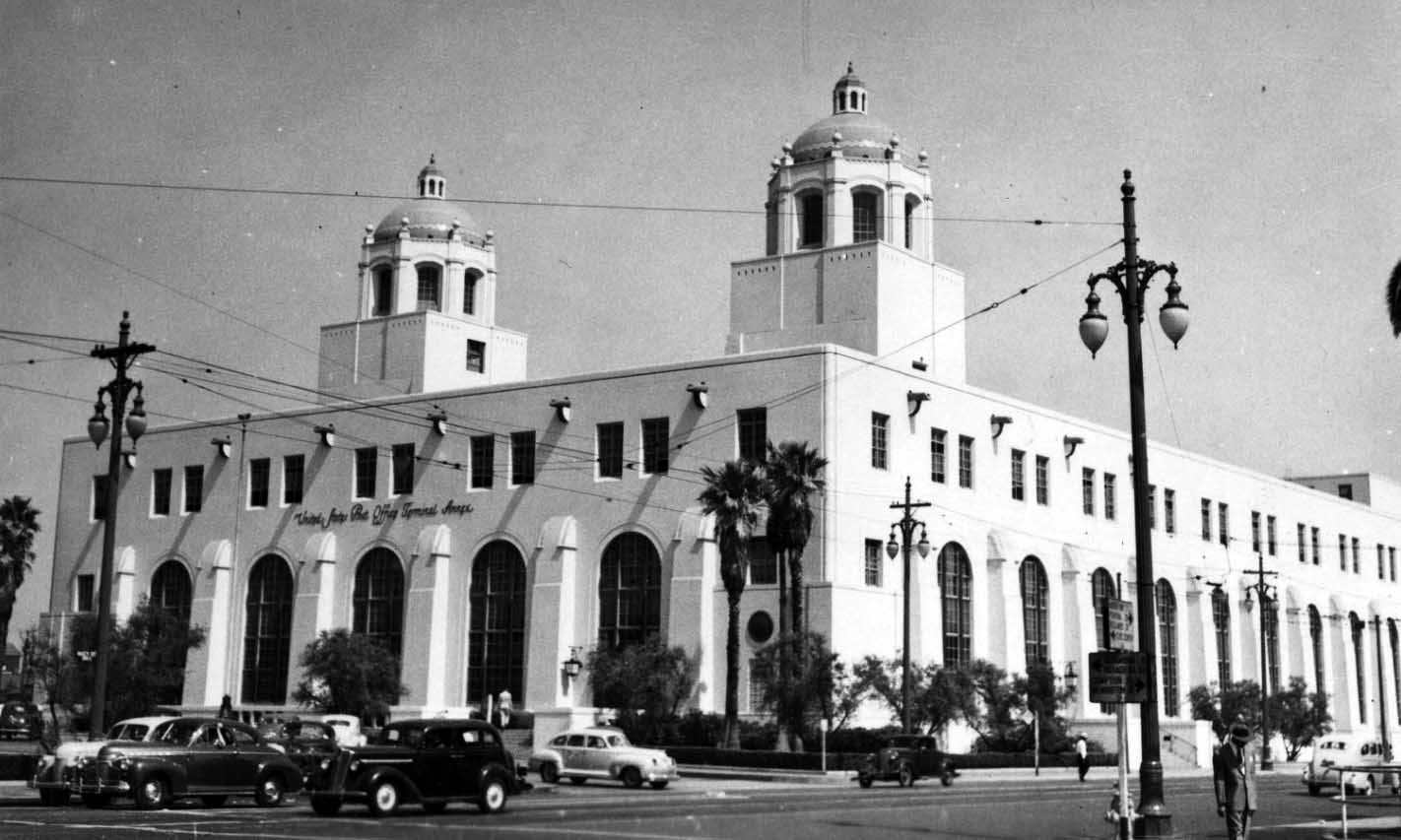 |
|
| (1940s)** - Cars pull out of the parking lot of the United States Post Office Terminal Building. Note the ornate dual-lamp tear drop streetlights. |
Historical Notes By the 1980s, the operations had outgrown even the expanded facilities at the Terminal Annex. The facility's volume had grown by the mid-1980s to 14 million pieces of mail per day, and the annex was plagued by inadequate space, overcrowding and inadequate work areas. Accordingly, the Postal Service Board of Governors in 1984 approved the construction of a new $151 million general post office in South-Central Los Angeles. Almost 50 years after Terminal Annex became the city's main mail-processing facility, the new processing facility in South Central opened in 1989. Despite the move of the processing facility, the customer service windows in the Terminal Annex's ornate lobby remain open.* |
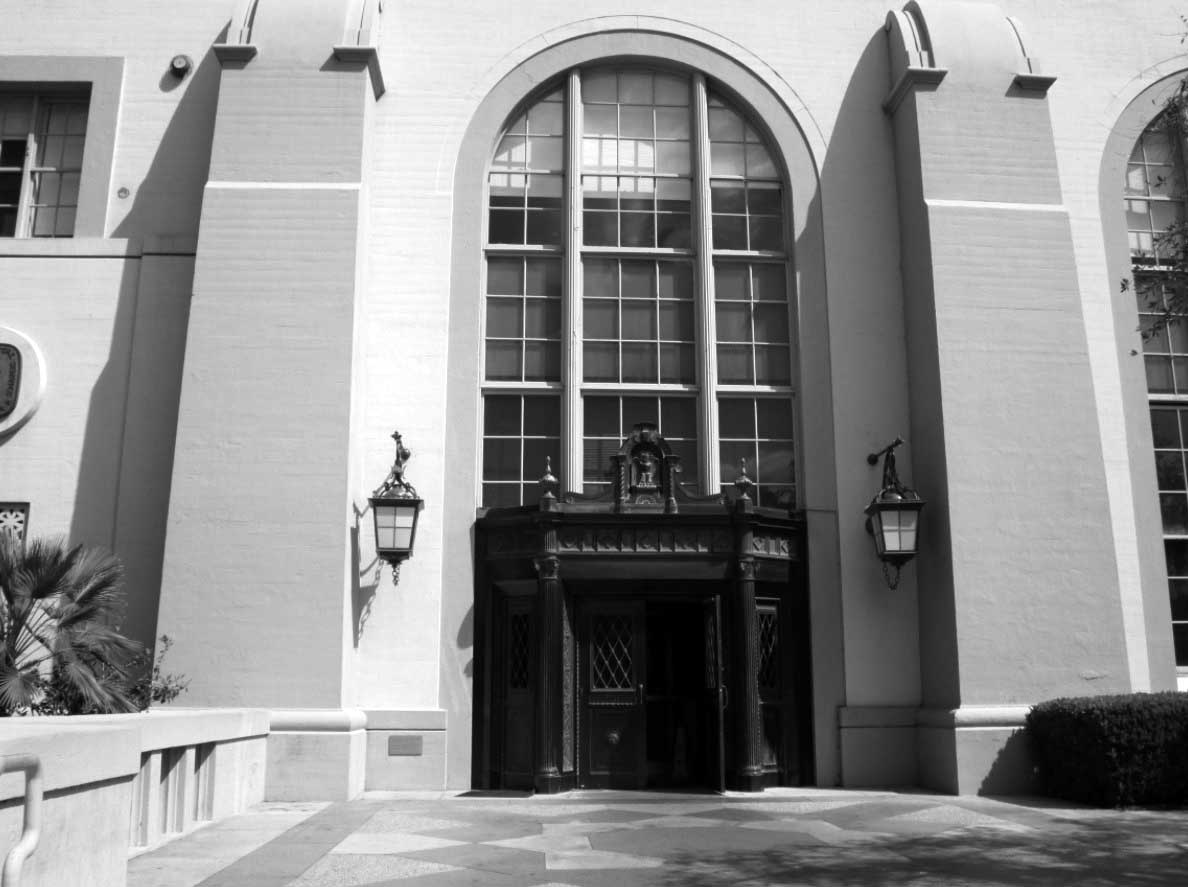 |
|
| (2010s)* - Close-up view showing entrance to the Terminal Annex Post Office – 900 N. Alameda Street |
Historical Notes The Terminal Annex building was built for the purpose of processing all incoming and outgoing mail in Los Angeles. Though its purpose was principally utilitarian, Architect Gilbert Stanley Underwood sought to keep the building's design in keeping with the city's Union Station, which opened across the street in May 1939. |
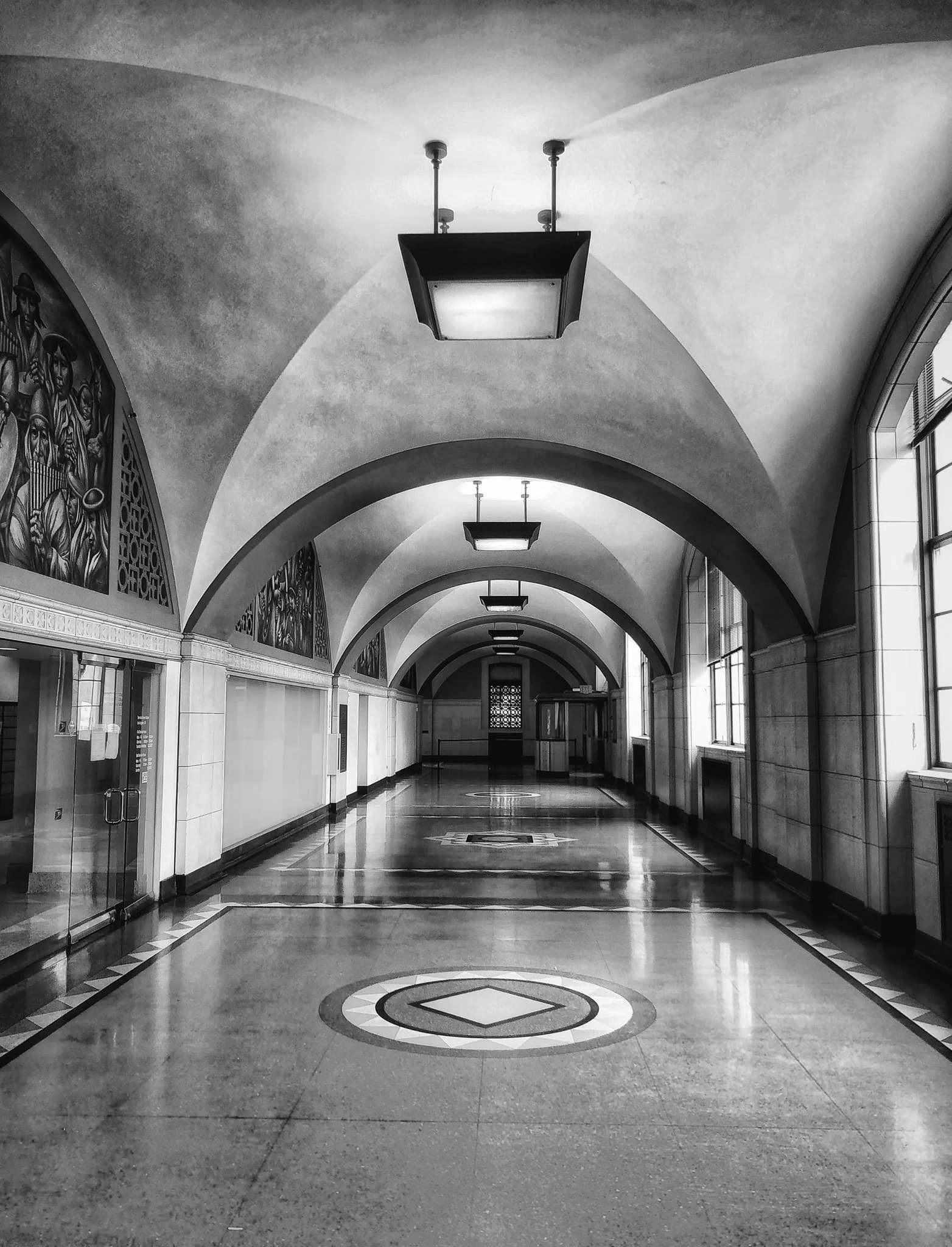 |
|
| (2022)* - Terminal Annex Building interior. The murals by Boris Deutsch in the lobby are magnificent. Photo by Carlos G. Lucero |
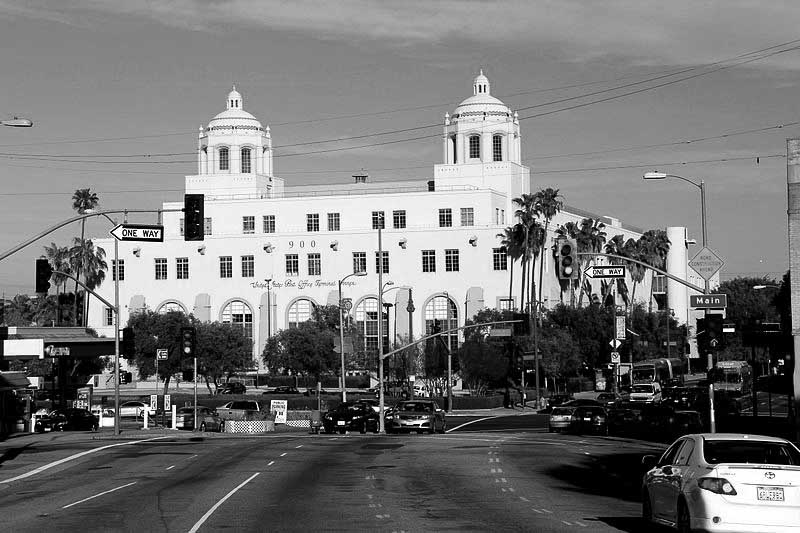 |
|
| (2012)* – View looking East on Cesar Chavez Avenue from Main Street showing the U.S. Post Office Terminal Annex, 900 Alameda Street. Photo by MIke Jiroch via Wikipedia |
Historical Notes The Post Office Terminal Annex was added to the National Register of Historic Places - Building #85000131, on January 11, 1985. |
* * * * * |
|
Other Sections of Interest |
|
Water and Power in Early LA |
|
Newest Additions |
New Search Index |

A new SEARCH INDEX has been added to help navigate through the thousands of topics and images found in our collection. Try it out for a test run.
Click HERE for Search Index |
* * * * * |
< Back
Menu
- Home
- Mission
- Museum
- Major Efforts
- Recent Newsletters
- Historical Op Ed Pieces
- Board Officers and Directors
- Mulholland/McCarthy Service Awards
- Positions on Owens Valley and the City of Los Angeles Issues
- Legislative Positions on
Water Issues
- Legislative Positions on
Energy Issues
- Membership
- Contact Us
- Search Index
© Copyright Water and Power Associates
Layout by Rocket Website Templates